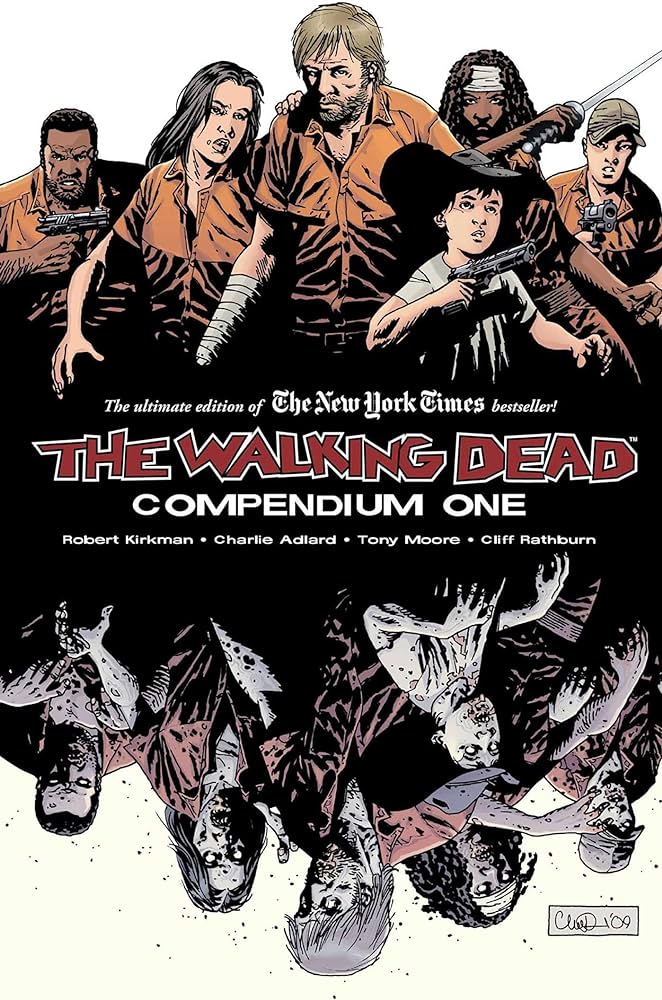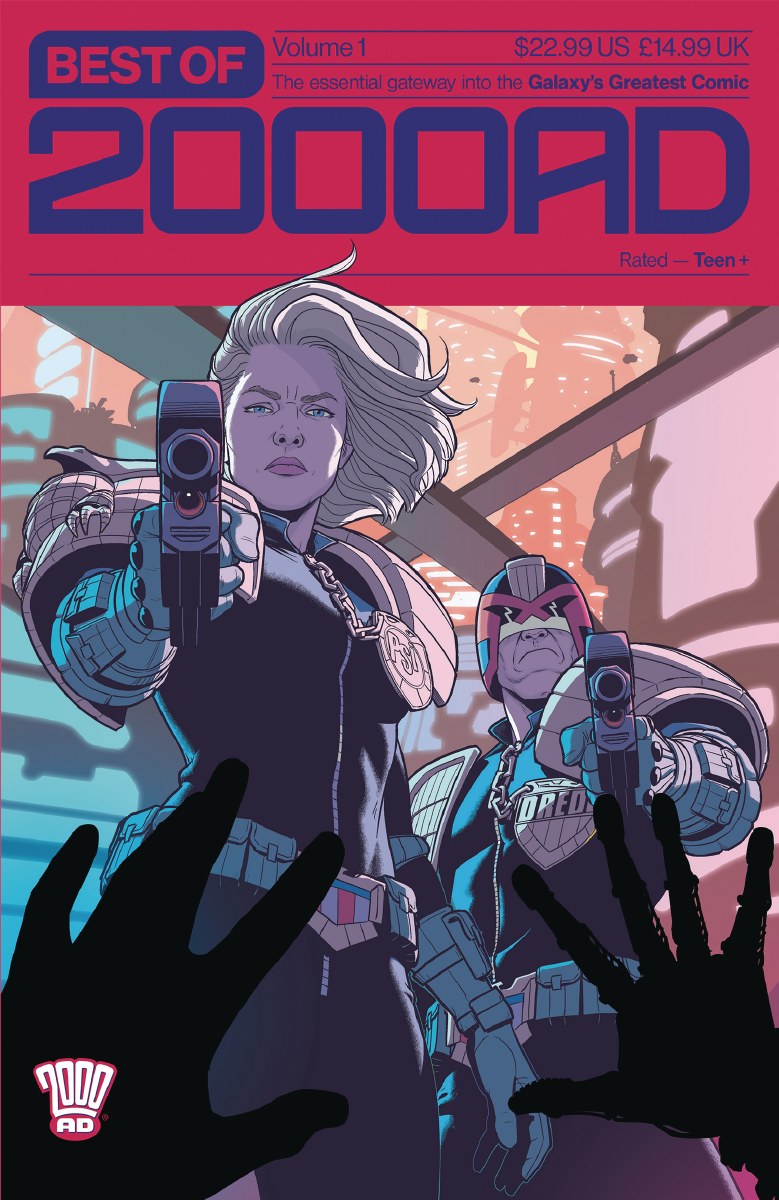The Format Boom is On
Compendiums, digests, and other collection formats are so hot right now. But what's fueling that heat?
Comics come in all shapes and sizes, and they have for some time now. While the single-issue form is arguably the most famous, softcover collections called trade paperbacks have existed for decades, hardcovers are similarly aged, tankōbons are the eternal go to for manga, and the giant-sized tomes known as omnibuses are so prolific that there are entire YouTube channels dedicated to the format. The medium’s versatility is undeniable, and it’s something we all know about.
That includes, of course, the comic publishers themselves. When asked about the format boom that’s seemingly been happening with direct market 1 publishers of late, they understandably insisted that they’re no strangers to the work that goes into making these various types of releases happen. As Kat Salazar, Image Comics’ VP of PR & Marketing, said to me, “Publishing our comics in a variety of different formats certainly isn’t new for us!”
Salazar is right, as were other reps who mentioned that the same was true for their companies. Publishers have leveraged different formats for as long as they’ve existed. You can even find examples of each on the new release shelves at your local comic shop almost every Wednesday. They’re staples of the average publisher’s line. 2
While they’re not wrong when they say that none of these variations of comic collections are new, what’s changed is how frequently certain formats are deployed, as well as which publishers are leveraging them. And it’s not just me that’s noticed that. Others I talked to have recognized the increasing diversity of formats and how often they’re utilized.
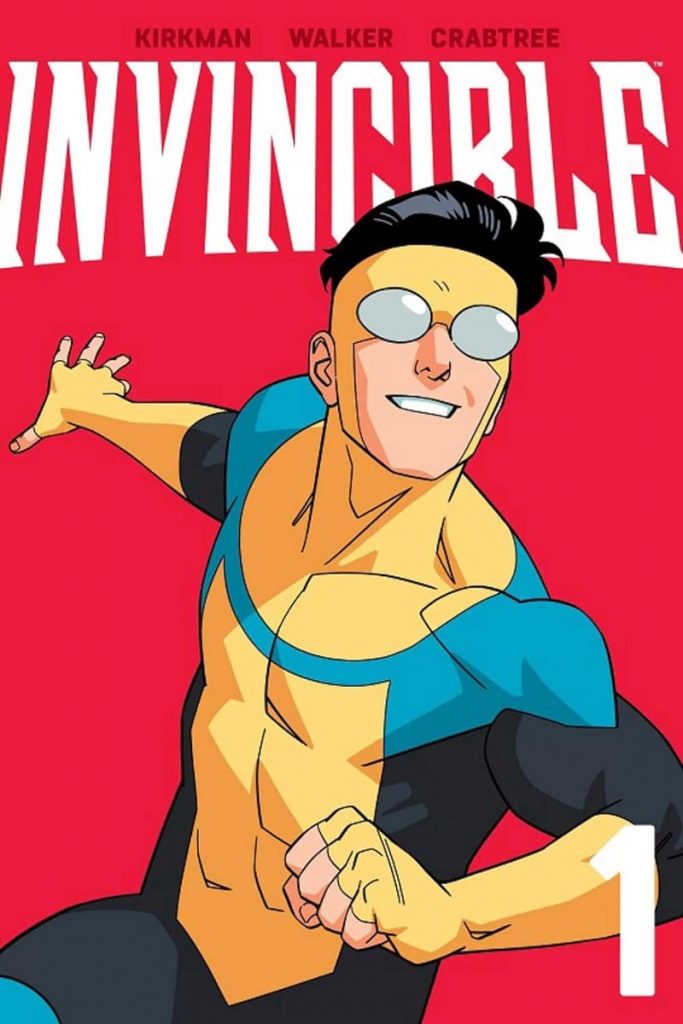
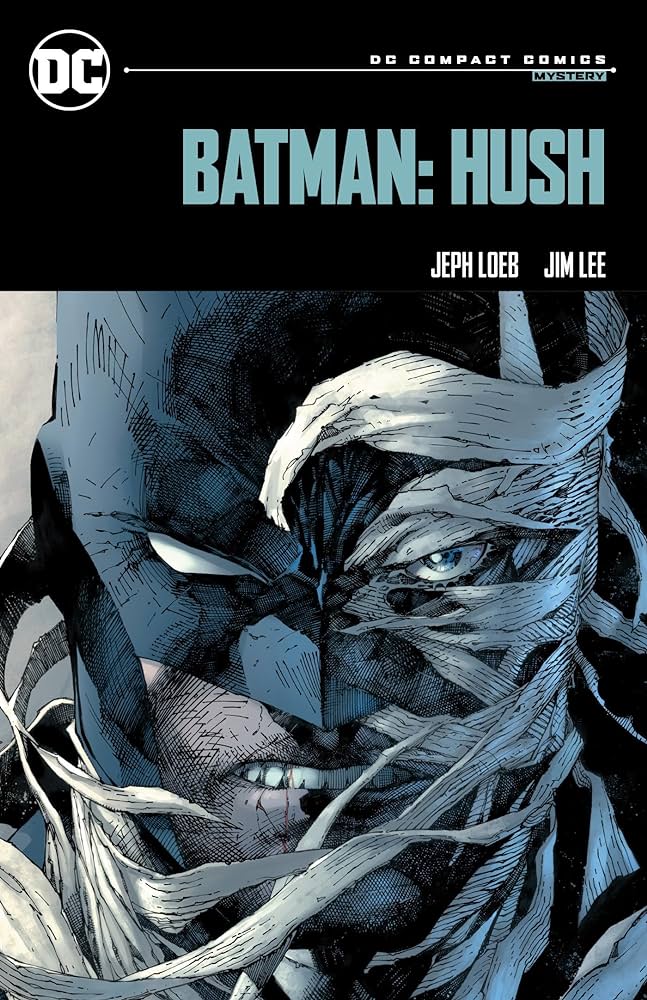
Whether it’s digest sized releases for Skybound’s Invincible and Image’s Saga or DC’s Compact Comics line, 3 the seemingly endless swarm of compendiums, or DC’s upcoming Finest line that collects a bunch of comics into phonebook-sized paperbacks, there’s been a recent surge of publishers rereleasing their greatest hits in new (for the title) forms. And rather than pricing out huge swaths of potential customers as omnibuses often do, most of these are designed to be affordable, with digests starting at $9.99, DC’s Finest line coming in at $34.99, and most compendiums topping out at around $60. 4
While the formats themselves aren’t new, 5 how they’ve been embraced of late seemingly is. Publishers are doing more and more to leverage their backlists in a variety of ways to speak to a growing mix of readers. And it seems to be working. These new editions are wonderful, and comic retailers have noted how well these varying projects — particularly the DC Compact Comics — have done in their shops. They’re aware of this trend, and if anything, they’re hoping it’s just the beginning.
“We knew (DC Compact Comics) were going to be popular but it has surpassed our expectations and then some,” said Bruno Batista of the Dublin-based comic shop, Big Bang Comics. “I hope to see more cheap digests from more publishers. This industry can and should support all sorts of price points, and it’s about time we start seeing more of that.”
Publishers are in the lab these days, trying to do everything they can to discover what customers, comic shops, and bookstores really want. 6 Every week it seems like a new digest-sized release or compendium is announced, often to the delight of retailers and bookstores. But why is this happening? And what led to some of these releases? Those are good questions, and ones we’ll be exploring today with the help of some of the comic publishers doing it best right now.
While it might seem obvious why there’s been a surge in how often publishers are releasing comics in other formats like digests and compendiums, it was still worth asking why they believe it’s happening. And one of the biggest reasons was similarly obvious: They were already using them, so this trend just continues what they were already doing.
Take Skybound Entertainment as an example. Two of their titles have acted as de facto test kitchens for a while now. Each was proof of the value of different formats when you’re trying to connect with new audiences, according to its SVP/Publisher Sean Mackiewicz.
“Almost everything we do is built off the spine of how Robert (Kirkman) redefined the collection of successful comic series with The Walking Dead 7 and Invincible, establishing lines of trade paperbacks, hardcovers, omnibuses, and compendiums, giving readers and retailers a variety of formats and price points to select what works best for them,” Mackiewicz said.
While those titles were massive hits, making their success difficult for other titles to emulate, they do offer insight into what comic shops and bookstores respond to. That information has helped Skybound plan the paths of other comics it publishes.
Using what’s worked before as a guide has been similarly useful for Image. Salazar said “it’s been pretty standard for us to take a look at our backlist bestselling titles and repackage them for different audiences.” The reason they do that is simple, and it’s something that ties into what Mackiewicz said: different readers want different things.
“Some readers want deluxe hardcover editions with all the bells and whistles, others just want to binge-read huge chunks of the story in compendium format, and still others like the budget-friendly pricing of a paperback,” Salazar said.
Publishers can’t do that with everything, of course. Electing to release a title as an omnibus or digest won’t instantly help it find a new audience, or at least not to the degree it might need to be considered a success. That’s why it’s important for publishers to listen. Sometimes that’s to data, as Salazar emphasized that titles being consistent sellers over the years is what makes it “clear that there’s an opportunity to support that momentum with more points of entry.”
Other times it’s about paying attention to what your partners and customers are saying. Owen Johnson, the Trade and Special Sales Manager of Rebellion Publishing, 8 shared that projects like its Best of 2000 AD series — which were six graphic novels designed to introduce new readers to 2000 AD — were built from what they heard at events they attended in the United States.
“Best of 2000 AD was a direct response to feedback received from readers, librarians, and retailers at various trade shows like ALA and ComicsPRO,” Johnson said. “It was a conscious targeted effort to engage new US/Canadian readers who may be reading science fiction at Vault, Image, Dark Horse and ‘don’t know where to start’ with 2000 AD but always wanted to give it a shot.
“The focus was on great value at a manageable price for entry level.”
That idea of listening is key to what guides these publishers as they make these kinds of decisions. It’s also a big part of the reason there’s been a shift of late. The manga boom and the rise of middle-grade and young adult graphic novels has led to a lot of readers not just wanting graphic novels of a certain size and shape — they expect it. That’s what their vision of comics is. To connect with them, publishers realized it might be necessary to adjust to those wants and needs, and that realization is guiding the thinking of the publishers I talked to for this piece, or at least to some degree.
“The digest editions have long been popular with YA readers and manga readers and as those customers branch out and discover our books, we want them to have the option to read it at a trim size that’s become comfortable to them,” Salazar said.
“Comic book readership is more diverse than ever and that includes their preferred format, which can vary if they came in through traditional American comics, manga, or younger reader content from traditional book publishers,” Mackiewicz added.
It isn’t just digests, either. Johnson said Rebellion has “learned there’s a wider thirst for the all-in-one definitive editions of evergreen perennials and the ‘greatest hits’ among general trade readers,” a trend that seems to be international in its reach. And by releasing existing titles in different formats, publishers have been able “bring in new and lapsed readers” according to Mackiewicz, while creating “a rising tide not just for these properties but for all of comics.”
That’s the advantage these formats offer. As Salazar said, “It’s cliche to say, ‘meet people where they are’ but it doesn’t make it any less true.” By releasing comics like Tim Seeley and Mike Norton’s Revival or Brian K. Vaughan and Fiona Staples’ Saga in different formats, Image is making its “books as approachable and accessible to as wide an audience as possible.”
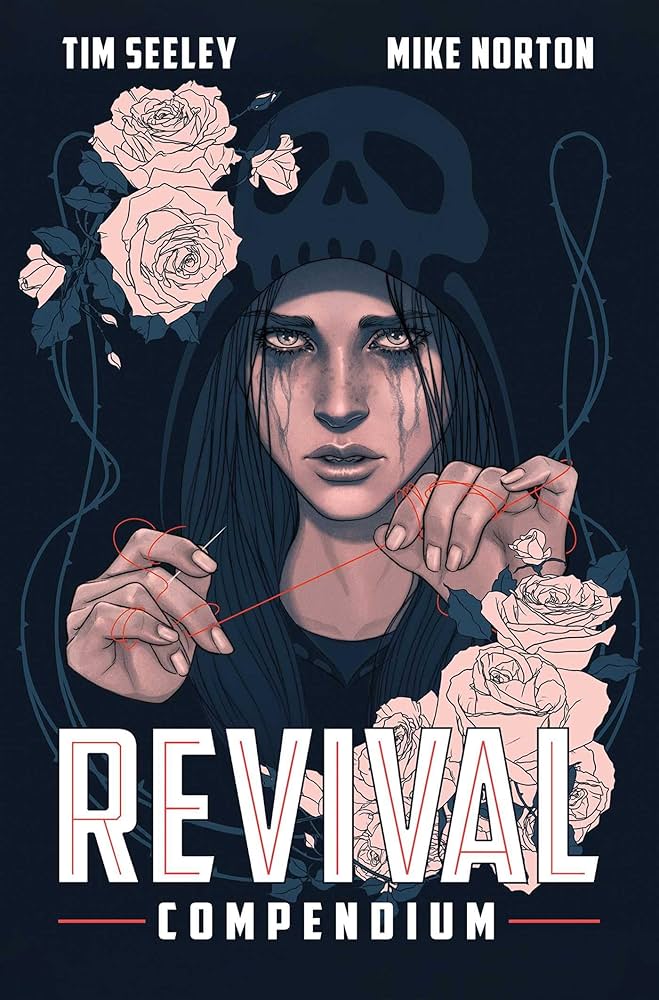

It isn’t just Image. That’s what all these publishers have learned. And that’s important for several reasons, not all of which are immediately obvious. One is that customers love having options. Some prefer smaller, more travel-friendly releases. Others want massive bricks that maximize the art. Another is cost. Every person has a different level of price sensitivity, so creating releases up and down that scale can increase the odds you connect with them.
The final big one is something Salazar mentioned, which is the ability to get your books into different markets. Bookstores, comic shops, and even big box stores like Target or Walmart might want certain editions more than others, so offering variety can be a way to get your foot in the door. That’s especially true because each of these editions is a completely new release, which is more likely to draw the attention of the people who order the books than a reprint.
Of course, you can’t just resize the comics, slap them into whatever format you feel like, and call it a day. According to Johnson, there has to be intentionality behind it, a desire to match a comic with the size and shape that works best for it.
“Honestly, each comic is different. The art style, pacing and storytelling choices suggest the format and the right way to publish that work. You have to be guided by that,” Johnson said. “The reader needs to see a publisher has thought it through and are presenting the work with consideration to quality and shelf-life, not just a high price point.”
If you manage to do that while releasing these projects in a cohesive, thought-out way — like DC Compact Comics has with its consistent design and its positioning as a line rather than a series of one-shot releases — you have the chance to create a real difference maker. That’s something these publishers have known for a while, of course. But they’re seemingly leaning into the idea even more consistently of late.
Of all the direct market publishers, the one that’s generated the most interest with its recent forays into different formats has arguably been DC, at least according to the shops I’ve talked to. Like with the rest, they were quick to suggest that this is nothing new. Nancy Spears, DC’s VP, Sales & Marketing, told me that “DC has one of the richest comics libraries and has always been at the forefront of mining these stories for fans to read again or share with new generations of fans.” She’s not wrong. The publisher has long leveraged other formats, whether you’re talking about single-issues or collections.
But it’s undeniable that the recently launched DC Compact Comics and the upcoming DC Finest books have struck a nerve. Each offers an appealing blend of strong production value, 9 unique sizing, and reasonable pricing. Spears views each slightly differently. DC Finest and its “comprehensive softcover collections” of varying “characters, periods, and genres from across DC history” is ideal for “completists to build their collections while” still being “accessible to casual fans.” It has a lean towards existing fans with some broader appeal.
The Compact Comics flip that script. Spears said these digest editions allow “new or curious graphic novel readers to easily pick up a copy of DC’s most iconic stories in an approachable, value-priced format similar to mass paperbacks and manga.” These books are clearly designed to expand the publisher’s audience through beautifully produced, reasonably priced collections of classics like Watchmen or All-Star Superman. Everything about them speaks to the readers DC is actively pursuing, while still having significant appeal for current readers.
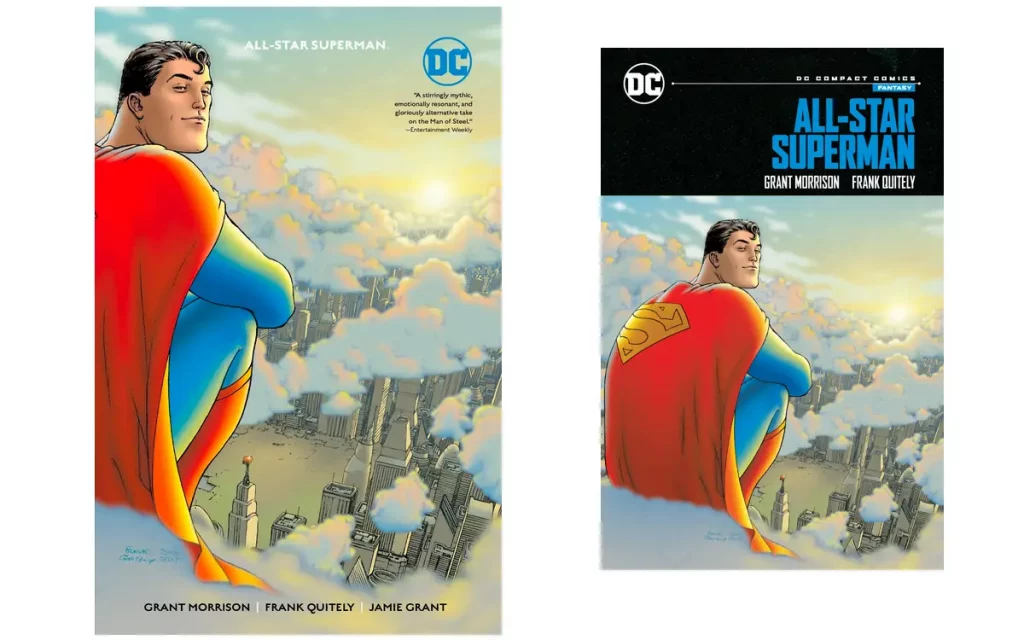
That’s why these efforts are so smart. They complement each other well, with strengths that are perfectly in balance. More than that, both appeal to DC’s primary retail targets as well as two high value audiences they’re eager to woo. Even better? Neither requires the creation of new comics, making each even more valuable. 10
The DC Compact Comics line was a particularly big swing by the publisher. Maybe even atypically so, as it’s probably been since the launch of its younger reader-centric graphic novel lines — DC Ink and DC Zoom — that we’ve seen an effort from them with similar goals. 11 Because of how unusual it was for the publisher, it could have been perceived as a risky move, at least in theory.
The uncertainty surrounding it, though, was limited going in because the publisher already knew two things. One was that its format was popular. DC’s SVP & General Manager, Anne DePies, said when the line was announced that its dimensions were “the most widely circulated softcover book size in the US and is popular among graphic novel aficionados in international markets.” The other was even more important. They didn’t just know this size worked for other comics. They knew that people loved to read DC’s comics in this exact format already.
That’s where François Hercouet enters the picture. He’s the Editorial Director of Urban Comics, a comic publisher based in France that translates and prints DC’s entire line in the country as well as an array of comics from houses like Image, Skybound, BOOM!, and more. Hercouet’s long worked closely with DC, and with that relationship comes reciprocal interest. As he told me, DC’s “often been interested in (Urban’s) formats and concepts.” He even recounted an experience that found former DC Editor-in-Chief Dan DiDio giddily roaming the publisher’s offices with black and white editions of DC titles that Urban had produced, as DiDio eagerly told Hercouet, “I’m stealing this!”
“It would later become the Batman Noir collection,” Hercouet said.
Since the two companies formed a connection as licensor (DC) and licensee (Urban) — a relationship that officially launched in 2012 — the latter has constantly experimented with how they can reproduce the material in France. Urban had to do that because American comics have always struggled in France, occupying “a niche position” because their “content and format were primarily aimed at a captive audience: young male fans of superheroes.” That didn’t work in a country that, while passionate about sequential art, primarily kept to its preferred version known as bandes dessinées (BD).
Hercouet and his team wanted to find a way to “take comics out of this niche and extend their reach beyond their natural readership” by delivering these stories in a wider variety of formats. This took them down many roads. Initially, Urban shifted away from the softcovers superhero comics were known for in France and published DC’s releases as hardcovers, each of which were “coupled with a strong graphic layout.”
“The message we sent was that even American comics can have a touch of class in your libraries,” Hercouet said, as the team pushed against the belief that comics from America were “cheap reads.”
That helped immensely. It created “real demand” for DC’s comics in France. So, Urban just kept on experimenting. Hercouet walked me through the publisher’s history, as they created no fewer than nine unique lines, each with different formats, designs, and objectives. Those goals ranged from introducing kids to Urban’s releases to its attempt “to invade general European BD shelves” with its high-end Grand Format Urban line.
More relevant to this piece, though, was its Urban Comics Nomad line. With the publisher celebrating its tenth anniversary and France facing economic challenges, they decided to “turn the tables” on its original hardcover releases by creating a “small, flexible format with flaps in a white layout” for DC’s titles — including both superhero comics and Vertigo releases — that were sold at reasonable prices. Like the hardcovers that started this journey, Nomad was a reaction to the moment they were created in.
“Nomad was born of this realization of the impending economic crisis and the need to create an attractive, sustainable offering to prepare for the future,” Hercouet said. “A sort of permanent gateway.”
It worked. The line debuted to “critical and commercial acclaim.”
If Nomad sounds familiar to you, at least conceptually, that’s because it should. It’s pretty much exactly what DC Compact Comics is. It’s effectively proof of that very concept. Like Nomad, Compact Comics collects complete stories in digest-sized editions at a low price. Like Nomad, Compact Comics labels each release with a bookstore friendly genre designation. 12 Like Nomad, people cannot get enough of these Compact Comics.
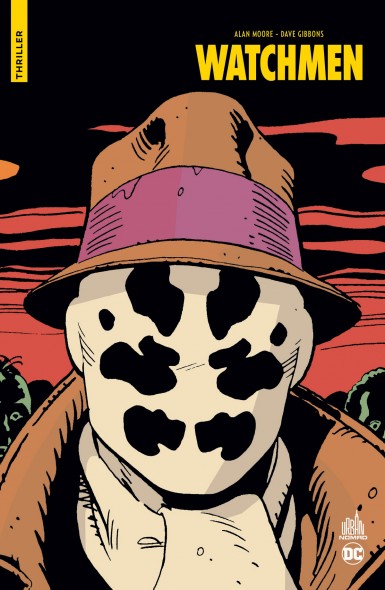
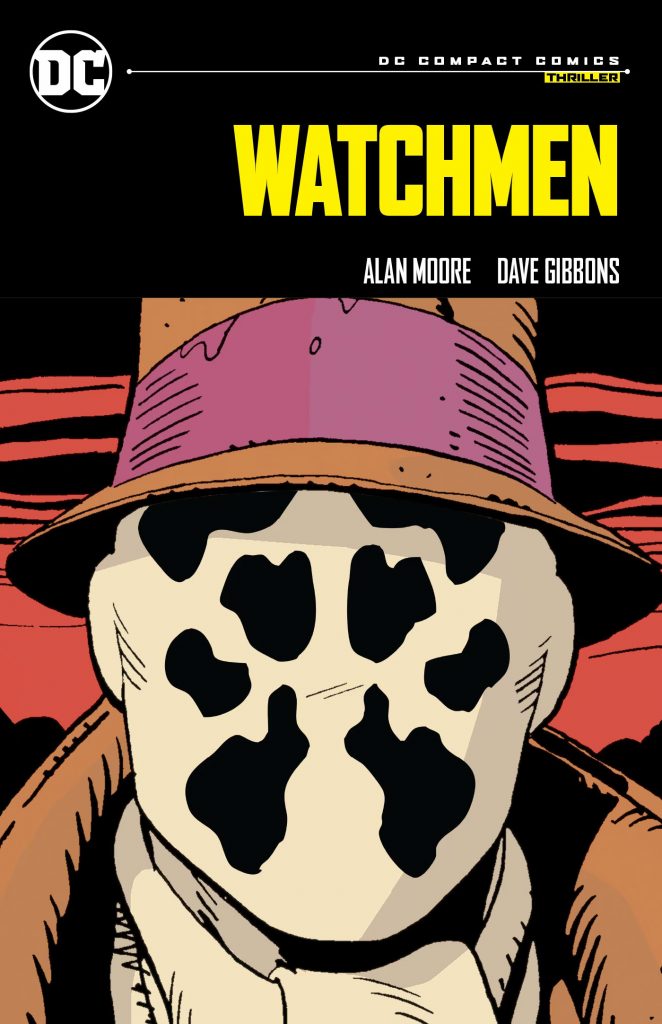
That’s not to say DC acted improperly here. There’s nothing nefarious about how they followed Urban’s lead. This is how the relationship between the two works. Hercouet told me Urban’s able to “occupy the passenger seat” in their partnership, and that’s because they’re not burdened with the creation of the actual comics like DC is. This allows them to “take a step back and think about what we could do better” in terms of format. That’s how they cook up so many new ways to approach these stories.
Once this line debuted, Urban shared its “experience and knowledge” with DC, as well as the books themselves. From there, DC came “to the same conclusions for their market,” which led to the development and then launch of DC Compact Comics. It’s a relationship that works both ways, one that allows each partner to learn from the other while building on each other’s successes as they move along.
This format boom is a trend that’s worth exploring, one that could pay dividends for the comic industry and its publishers going forward. That’s crucial, and at the heart of why it’s being focused on today. And yet, while the biggest reason I wanted to write about it is just how impactful it could prove to be, it also has a personal angle to it. And it’s a pretty simple one.
I wanted to write about this trend because I love it.
Both as a reader and as someone who analyzes the industry, I’ve long felt like publishers stick to the typical playbook too readily. While I love the single-issue comic form and have many a trade paperback to my name, I also have digests, compendiums, tankōbons, hardcovers, omnibuses, and whatever you’d call Beehive Books’ production of Ronald Wimberly’s webcomic Gratuitous Ninja. Different formats fit different comics better, and having options when it comes to price and size can turn my pass into a buy and my like into a love. And I’m a long-time reader with dozens of long boxes to my name.
For the potential readers of both today and tomorrow, offering different solutions is even more important. It isn’t just about optionality but speaking their language. That isn’t to say it’s as easy as just reprinting an old comic in a new format and watching the money come in. But giving these readers more options to choose from, ones that might fit their vision of comics a little more snugly, could be essential to making inroads with them. At the very least, it’s worth finding out if there’s merit to that idea.
And that’s what these publishers are doing. It even seems like they’re being rewarded for their efforts. Skybound’s Invincible digests and compendiums are working for shops. Image’s increasing number of compendiums are finding readers, and I cannot wait to see how Saga does with its upcoming digest editions. Rebellion uncovered a nice solution for American readers with its Best of 2000 AD line. The DC Compact Comics line is a hit. DC Finest could prove to be one as well.
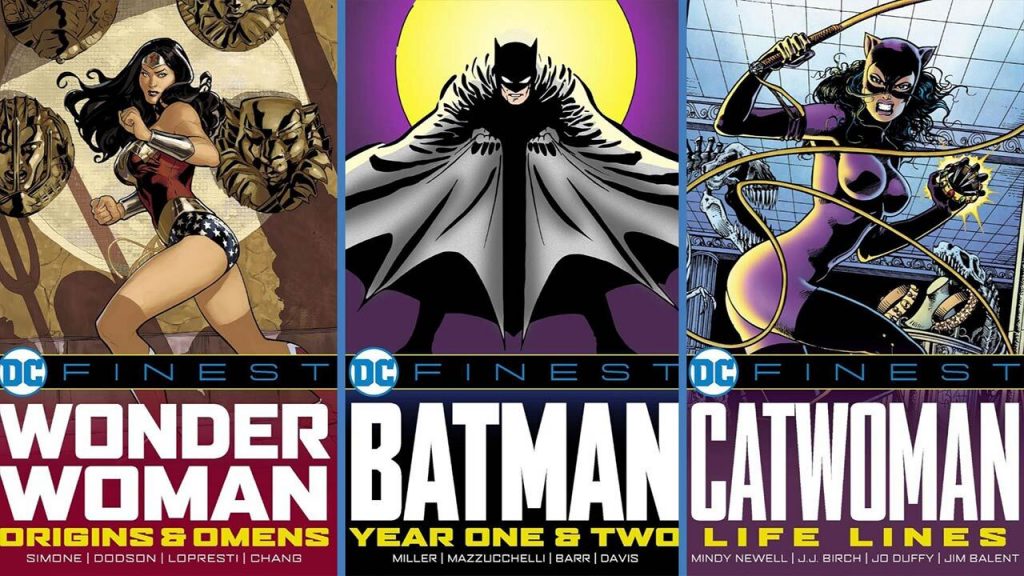
That list could go on and on, too. Even beyond the ones I talked to, comic publishers continue to find new answers for old comics. It’s important to do that because it’s a challenging time to sell entertainment of any variety, let alone comics. The tried and true doesn’t necessarily work as well as it used to. That’s why this isn’t just something publishers hope to do.
It’s something they have to do.
“It’s a massively competitive market currently, and wider economic factors affect all of us,” Johnson said. “Giving readers good reasons to spend their hard-earned disposable income on our books, and earning every sale, is our focus.”
Maybe that’s why I appreciate Hercouet and his team at Urban Comics so much. When you talk with him, you can’t help but feel that he does this because he loves it as much as because he needs to. Urban is always trying to find solutions for problems that don’t even exist yet, just in case they ever do, and because there’s always the possibility that new readers might discover their books if they find the right answer. That’s why they live in their comic format lab, and never seem to be too worried about getting something wrong along the way.
“Sometimes it works, sometimes it doesn’t, or sometimes we’re a little too early,” Hercouet said. “As publishers, there is no absolute truth, and we never do more than verify our intuitions through market validations. But when it comes to making the contents of our catalogs known to as many people as possible, we remain pragmatic, and if that means transforming the basic ‘comics’ object, that’s fine with us.”
That’s a mentality everyone in the comics industry could benefit from, and it’s one more seem to be embracing of late. That’s not to say everything is going to change. Classics like the single-issue comic and the trade paperback aren’t going away anytime soon. But complementing those with compendiums and digests and who knows what else can only benefit everyone involved — the readers, retailers, creators, and publishers themselves — if done with planning and intent. And that’s what we’re seeing in this trend, one that continues work publishers have long done but with a lean towards what the customers of today are looking for.
That’s a good start.
But here’s hoping it’s just the beginning of something more.
Or the side of the comic industry defined by comic shops.↩
For most direct market publishers, the standard operating procedure has long been variations of this release pattern: single-issue comics -> trade paperbacks -> hardcover -> omnibus. There’s method to this madness, and it’s one that still exists as the typical approach for most.↩
Heck, even Allison Bechdel’s beloved graphic novel Fun Home has a digest edition from Penguin UK’s imprint, Vintage.↩
And the latter can have anywhere from 20 to 50 issues in it, making it an incredible value.↩
Even Marvel embraced digests once upon a time, particularly with titles from its Tsunami line that ran from 2003 to 2005, like Runaways.↩
It should be noted that this is happening with single issues too, albeit to a lesser degree. We’ve seen a bit more diversity in the size and shape of those comics, as well as a recent uptick in anthologies from direct market publishers.↩
Its first compendium was released back in 2009!↩
Which, in case you don’t know, is the British publisher that’s home to 2000 AD and famous for Judge Dredd, amongst other things.↩
I have several of each and they’re impeccably crafted.↩
That’s one of the quiet superpowers of this trend. It’s a way for publishers to maximize the value of already completed releases. That’s extremely powerful.↩
DC Black Label was another bold move on the format front, but it always felt like it was aimed more at people already reading DC comics, to some degree. That’s true even if one of its unstated objectives was to create evergreen comics people could pick up and read in collected form forever.↩
i.e. Watchmen is a “Thriller.”↩

